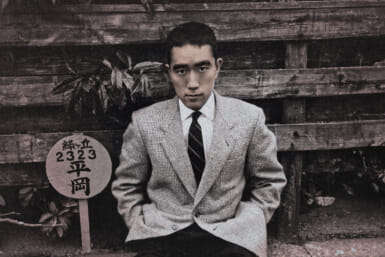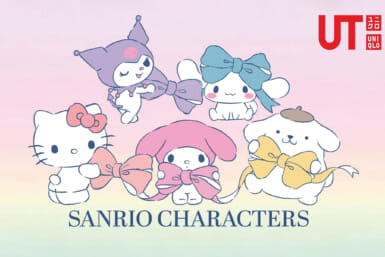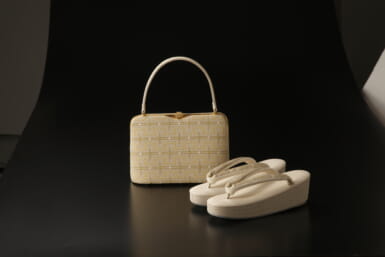Colorful Family Crests: Everybody Can Have One
with Yurie Horiguchi
I have an evening dress in a black and white print, each design representing a different Japanese family crest. I was delighted with my acquisition at the time, thinking what a wonderful conversation piece it would make at parties.
To my utter chagrin, not one single person has even casually remarked on the distinctive print. There must be a moral to this somewhere.
To add insult to injury, I really boned up on family crests in order to show off my erudition should the occasion arise. The dress now has almost done its duty and will probably be found at one or another of the next charity sales, but I’m darned if I’m going to be left holding the crests, so to speak.
Family crests, or mon, are almost as numerous as are the plants of the earth, and each is distinctive although all stem from a basic motif—about 360 motifs, in fact. Variations on the basic design produce a total of over 3,000 different crests.
In Europe, crests are generally limited to royalty, nobility and aristocracy although some nouveau riche families have tried to edge their way in with designs of their own, unrecognized, however, in the Hook of Heraldry.
In Japan even the nouveau riche don’t need to take such drastic steps as someone somewhere in their family tree surely has title to a crest, no matter how undistinguished a one it may be.
It all started many, many centuries ago, but up until about the 11th century (before William the Conqueror), crests were the privilege of the Imperial family and great nobles, and were used mainly for ornamental purposes, applied to articles of furniture, conveyances, on palace entrances, etc.
Then came the Dark Ages of civil strife, which lasted for almost 400 years. As clan fought clan, feudal lords began to mark their clothing, harness, swords, banners, lanterns and tents with their respective crests for identification on the battle-field.
The warriors under them followed suit, and among commoners, the samurai were the first to have crests of their own, derived from that of their feudal lord. Before the use of crests spread down to the hoi polloi, stage artists and courtesans had special ones designed for themselves which they wore when appearing in public professionally.
But to get back to the civil wars, a feudal lord sometimes conferred a special crest on a warrior as a reward for outstanding bravery. Now it sometimes happened that such a warrior was captured or killed on the field of battle and whoever got to him first divested him of his armor, swords, pennant, etc, claiming them for his own, crest and all.
This naturally gave rise to a certain amount of confusion among families so when peace finally came, a decree was issued to control family crests. Under this decree, the same crest could not be conferred on two or more persons, but if it was necessary to confer a crest on several people, each should have some small point of difference in order to distinguish one from another.
Hence, different borders were designed, some being circular, others rectangular, square, octagonal etc.. or some part of the basic motif was omitted or modified.
The family crest then came to be used not only for identification but as an emblem or symbol of titles and pedigree. Although the family crest is, in principle, common to all its members, women are allowed to use special, often more beautiful ones which are handed down from generation to generation on the distaff side of a family.
As we know (or should know), the 16-petalled chrysanthemum crest is that of the Emperor alone and can be used by no other person (at one time, on pain of death!). The Empress, however, uses a combination of the leaves and flowers of the paulownia.
The very early crest designs were generally floral in motif and have remained so in the majority, although animals, birds, insects, shells, etc. are also popular motifs. It is interesting to note that although the majority of crests were created during the years of civil strife, none are martial in motif.
Next to the Emperor’s crest in distinction is that of the Tokugawa family—three hollyhock leaves. Among other distinctive crests are those of noble families such as Matsudaira (six hollyhock leaves), Ikeda (a butterfly with folded wings) and Shimazu, (a cross in a circle).
Among the common people, many utensils are used as motifs, often denoting their origins. But Shinto shrines and Buddhist temples also use utensil motifs so there is nothing derogatory about them. As for business firms, although some like to call their trademarks crests or mon, the correct word is really shohyo. But to a Japanese employed in a firm, the latter’s shohyo is as much respected as his own family crest as it is considered to be a symbol of the company’s history, fame and standing.
Employees wear the “crest” as badges in their lapels, and the firms themselves use it on letterheads and products, as well as on kettles, tea cups, silverware, cars, furniture and just about everything else.
So it really cannot be classified with the revered family mon, although many do place it in the same category. Although the uses of crests were once as varied as the crests themselves, today they are most commonly used on ceremonial kimono.
Here, their use is governed by strict etiquette. The formal black kimono with embroidered designs rising from the hem to just above the knee, worn by married women at weddings, is called a tomesode. This has five family crests Imprinted on it-two in front (above each breast), one in the center of the back and two on the back of the sleeves.
The only other woman’s kimono that bears five crests similarly placed, is the mofuku or black kimono worn to funerals. The colorful kimono that ladies wear to receptions and banquets is called a homongi. It is imprinted with three or one crest, depending on the importance of the occasion. For lesser affairs, the homongi boars no crest.
Dishonoring one’s family crest in the old days was tantamount to a crime for whosoever did so was held to be guilty of bringing dishonor not only on his immediate family but on his relatives and ancestors also.
Now I’m beginning to wonder if I’ll ever dare throw that dress away, with all its mons.








